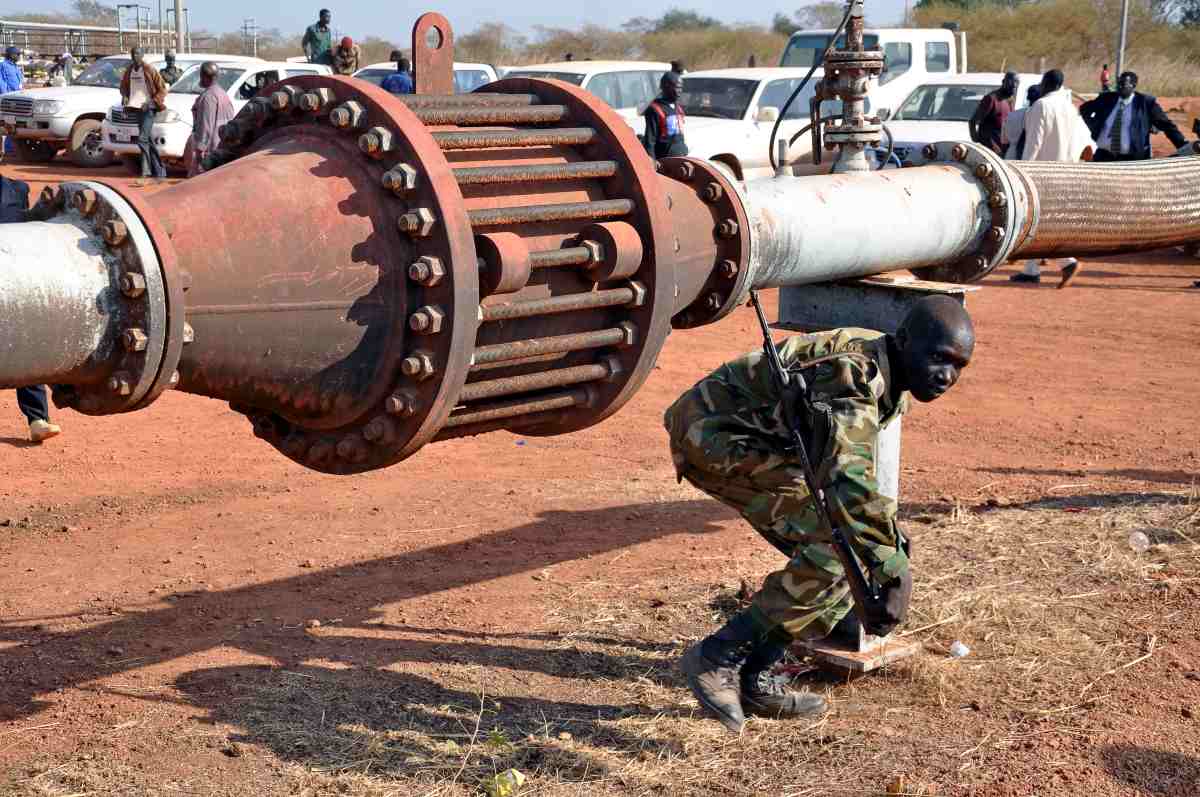Written By: Faith Jemosop
When the first shots of Sudan’s civil war rang out in April 2023, few could have predicted just how deeply the conflict would undermine the country’s already fragile energy infrastructure. But two years in, the war between the Sudanese Armed Forces (SAF) and the Rapid Support Forces (RSF) has plunged Sudan’s energy sector into disarray with rippling effects across the region. So, how bad is it?
What Has the War Done to Sudan’s Oil Infrastructure?
Before the war, Sudan was clawing its way back into the global oil scene. It had inherited aging oil infrastructure after South Sudan’s secession in 2011, losing 75% of its oil reserves. Still, it remained crucial as a pipeline hub transporting South Sudanese oil through the Greater Nile Oil Pipeline to Port Sudan.
Now? That infrastructure is a battlefield.
- Key pipelines have been damaged or rendered inaccessible.
- Oil fields in South Kordofan and the Heglig area are under threat due to proximity to RSF-controlled zones.
- Port Sudan, previously a safe logistics and energy export hub, is no longer secure. RSF’s drone strikes have recently targeted this critical city, raising fears of sabotage or port closure.
Also read: How Much Electricity Does the Average South African Household Use?
In March 2024, a fuel depot near Port Sudan exploded following clashes, cutting off diesel supplies to large parts of eastern Sudan for weeks.
What About Electricity? Is Sudan in the Dark?
Yes, and it’s not just literal darkness. The national grid is near collapse in many parts of the country. According to the United Nations Office for the Coordination of Humanitarian Affairs (UNOCHA):
- Over 60% of power generation plants are no longer functional.
- Maintenance crews can’t access grid stations due to security risks.
- Fuel shortages and looted facilities have reduced operational capacity to below 30%.
In Darfur, Kordofan, and parts of Khartoum, people rely on diesel generators yet diesel is scarce, prices have tripled, and many communities have been forced to return to biomass fuels, deepening deforestation and health risks.
How Has the War Affected Oil Revenues?
Sudan’s transitional government had relied on transit fees from South Sudanese oil exports to stay afloat. These were bringing in over $300 million annually before the war.
With the pipeline under threat and Port Sudan destabilizing:
- Oil exports dropped by over 40% in 2024, according to South Sudan’s Ministry of Petroleum.
- Sudan has lost hundreds of millions of dollars in transit fees.
- Black market fuel imports are thriving, enriching warlords rather than the treasury.
Also read: Why Morocco Should Be the Regional Leader in Sustainable Aviation Fuel Production
Meanwhile, the RSF has reportedly seized control of fuel reserves in western Sudan, selling at inflated prices and using oil revenues to finance its war campaign.
What’s the Impact on Renewable Energy?
Ironically, Sudan had begun laying the groundwork for renewable energy expansion before the conflict. It was in talks with international donors and private investors for:
- Solar mini-grids in rural states,
- Wind energy pilots in the Red Sea hills, and
- A $150 million World Bank funded electrification project.
Those plans are now in limbo. Why?
- All foreign direct investment has pulled out.
- Equipment destined for projects in Darfur and Kassala was looted or destroyed.
- The National Renewable Energy Corporation has ceased operations, citing security threats and loss of personnel.
Regional and Global Implications?
Sudan’s instability jeopardizes regional energy corridors:
- South Sudan is now considering alternative export routes through Kenya, threatening Sudan’s long-term economic relevance.
- Egypt, which imports some energy products from Sudan and shares the Nile water system, is closely monitoring the situation.
- The African Union’s Green Recovery Action Plan, which counted on Sudan’s participation in regional energy integration, faces delays.
What Needs to Happen?
Stabilizing Sudan’s energy sector requires more than just peace—it requires rebuilding from the ground up.
- Immediate humanitarian aid must prioritize fuel and electricity restoration to hospitals and water stations.
- A post-war energy reconstruction fund should be developed, potentially backed by the African Development Bank and Gulf donors.
- Local renewable energy solutions (like solar kits and mobile grids) must be deployed in conflict-affected areas that can’t wait for national recovery.
Can Sudan Rise Again?
The civil war has not only destroyed Sudan’s energy sector, it has turned it into a tool of war. Energy is now a weapon, a prize, and a lifeline. But it can also be a path to peace. If the international community, Sudanese technocrats, and regional partners can chart a recovery plan that centres on sustainable, inclusive energy access, Sudan may yet find light beyond the darkness of war.



